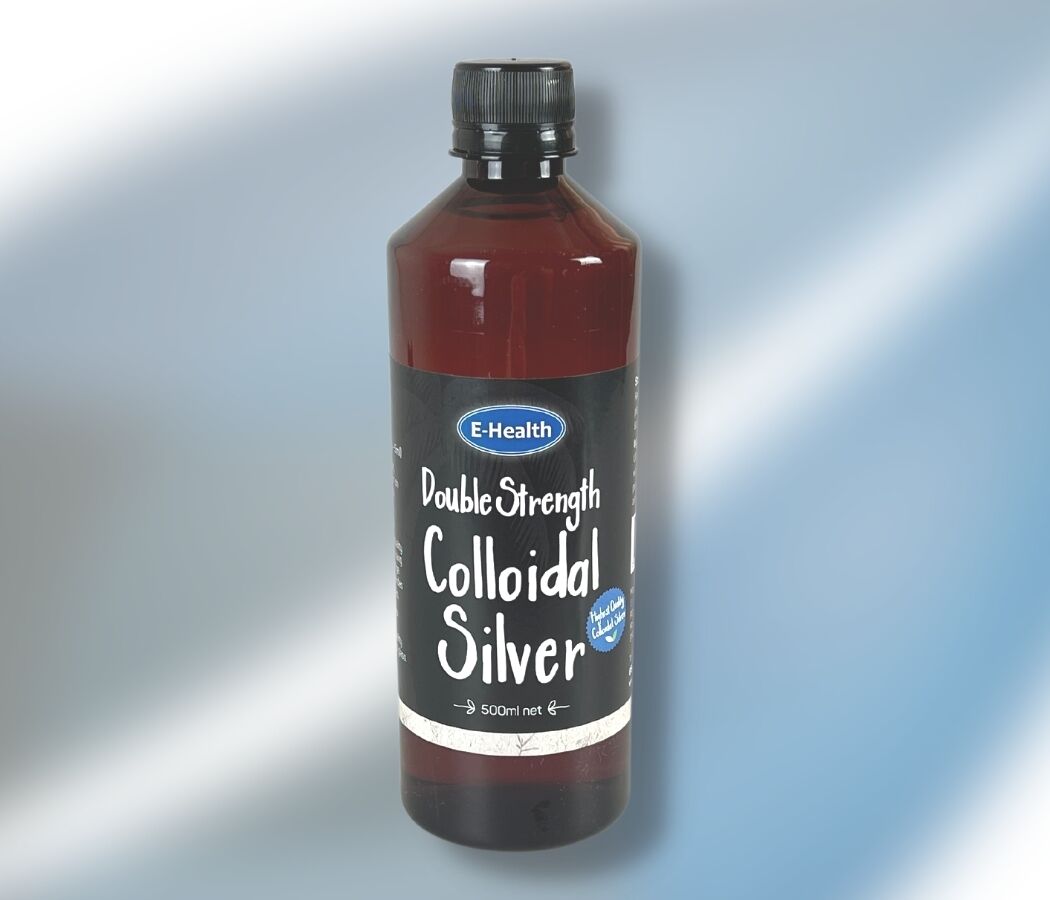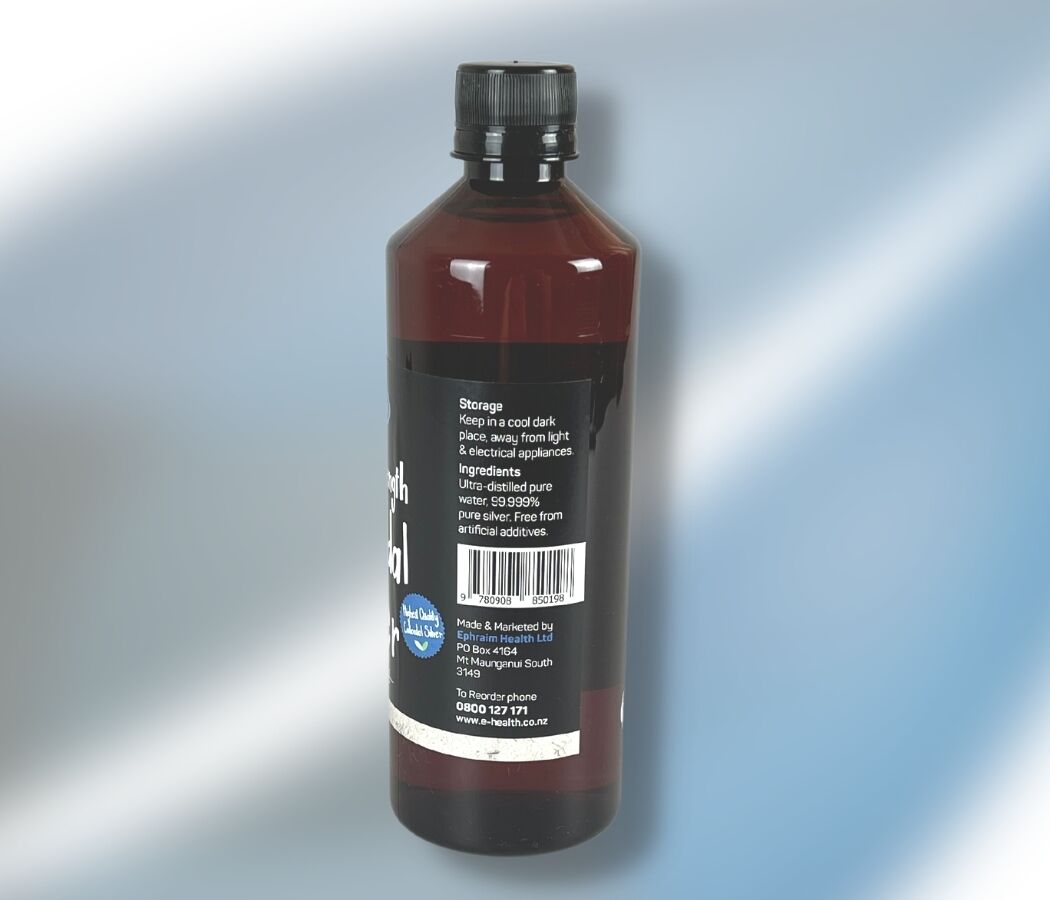Description
During the “Colloidal process,” tiny particles of Silver are released and suspended ready for action. Once inside the body, they seek out the ‘nasties” no matter where they are, totally depriving them of any sustenance so they suffocate and die. Colloidal Silver only targets the “bad bugs “leaving the “goodies” right where they are. Colloidal Silver has not been known to interact with any medical drug.
Our Colloidal Silver can be taken orally, sprayed directly into the eyes, ears and up the nose or applied topically to the skin.
Colloidal Silver can be taken every day as a powerful support for the immune system or used at the first signs of a cough, cold or sore tickly throat.
Colloidal Silver is a natural, non-toxic, odourless product that is safe for the whole family when used as directed. Colloidal Silver can also be used on your plants, pets & animals, as well as all household surfaces without the worry of nasty chemicals.
Evidence for Colloidal Silver
Nanosilver particles (nAg) generally present at 1 to 100 nm in size in at least one dimension. As particle size decreases, the surface area-to-volume ratio of NSPs increases dramatically, which leads to significant changes in their physical, chemical, and biological properties. Nanoparticles have been among the most commonly used nanomaterials in our health care system for hundreds of years. Recently, nAg has become of intense interest in biomedical applications, because of its antibacterial, antifungal, antiviral, and anti-inflammatory activity. (7)
Silver is a xenobiotic absorbed from the skin and mucous membranes of the gastrointestinal and urogenital tracts and lungs. It is excreted from the body in the urine and faeces. It was one of the first ‘antibiotics’ in medicine and remains in use in the treatment of burns and wound care. It is also a constituent in a heart valve, orthopaedic and dental prostheses. (4)
Studies have shown that ionic colloidal silver is a broad-spectrum antimicrobial agent against aerobic and anaerobic bacteria while having a more limited and specific spectrum of activity against fungi. (1)
Metal nanoparticles of silver (nAg) have been the subject of ample research interest in the last few years, due to their exciting size-dependent electrical, optical, physical, and chemical properties. In particular, nAg has attracted increasing research attention in the field of microbiology. (2)
Results of one study demonstrate the therapeutic potential of nAg for use in the antiviral infection and treatment of oncogenic herpesvirus-related cancers. (5) After 24 h exposure, especially n-Ag induced the expression of genes related to virus recognition and type I interferon responses. (6)
The advance in nanotechnology has enabled us to utilize particles in the size of the nanoscale. This has created new therapeutic horizons, and in the case of silver, the currently available data only reveals the surface of the potential benefits and the wide range of applications. Interactions between viral biomolecules and silver nanoparticles suggest that the use of nanosystems may contribute importantly to the enhancement of the current prevention of infection and antiviral therapies. Recently, it has been suggested that silver nanoparticles (nAg) bind with the external membrane of lipid enveloped virus to prevent the infection. (8)
The discovery and introduction of antibiotics were one of the greatest conquests in the history of medicine considerably contributing to improving the average life expectancy of the world population. However, the increasing misuse and abuse of antibacterial agents has led to resistance and cross-resistance. Indeed, most pathogenic bacteria become resistant with time to the action of antibiotics. This effect represents a paramount medical problem so that new molecules and compounds with high and persistent antibacterial activity are required to face the challenge of emerging infections and the global spread of drug-resistant microbial pathogens. (2,3)
For these reasons, the use of nontraditional antibacterial compounds is assuming increasing relevance. Taking advantage of the bacteria sensitivity to silver ions, nAg has emerged as a novel class of potential antimicrobial agents for the treatment of different infectious diseases, including antibiotic-resistant pathogens, and have been assessed in vitro as well as in animals. (2)
Silver, in the form of silver ions or nAg, has been used for centuries against various diseases and, in particular, for its strong antiseptic and antimicrobial efficacy against both Gram-positive and Gram-negative bacteria associated with low toxicity. nAg exhibit a broad spectrum of actions against morphologically and metabolically different microorganisms. (2)



Reviews
There are no reviews yet.